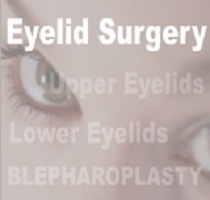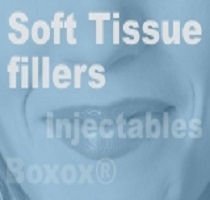The Synthetic Hydroxyapatite Implant
(InSIGHT Newsletter Special Edition/ Update)
On February 26, 1997, Health and Welfare Canada approved the Synthetic Hydroxyapatite Implant (manufactured by FCI, France) for general use in Canada.
LHydroxyapatite orbital implants are commonly used following enucleation, evisceration and as secondary implants [1]. The first ocular implant made of hydroxyapatite was implanted in humans by Dr. A. Perry in 1985 after several years of preliminary research [1,2]. This unique patented implant, (referred to as the Bio-Eye® ) [3], was approved by the U.S. Food and Drug Administration (FDA) in 1989 and is the anophthalmic implant most commonly used by Ophthalmic Plastic Surgeons in North America at this time [4]. The hydroxyapatite implant is that it is made of material similar in nature to the mineral component of human bone (calcium phosphate). As a result it is recognized by the body as similar. It has an extensive pore system that permits fibrovascular ingrowth allowing the implant to resist migration, a problem not uncommonly seen with earlier spherical implants made of polymethylmethacrylate. The implant allows attachment of extraocular muscles which in turn leads to improved orbital implant motility. By coupling the prosthesis to the orbital implant using a peg, a wide range of prosthetic movements as well as fine darting eye movements (seen commonly when people are engaged in conversation) can be obtained. The increased range of motion and fine darting eye movements allow a more life-like quality to the prosthetic eye. The Bio-Eye® implant has been a major breakthrough in the field of prosthetic eyes and socket rehabilitation.
Recently, a synthetic hydroxyaptite implant (produced in France by FCI [5]) has been introduced which is less expensive than the Bio-Eye® [6]. Three successive generations of this implant have been developed, analysed in the laboratory, studied in a rabbit model as well as in over 75 humans [7].
The FCI implant now available on the market is the “third generation synthetic hydrxoyapatite implant”. On gross external inspection, it looks very similar to the original Bio-Eye® with multiple pores. A magnified examination as well as scanning electron microscopy reveals a slight difference in pore uniformity and interconnectivity. Despite the apparent visible difference in pore uniformity, central vascularization occurs to a similar degree in both the Bio-Eye® and FCI3 implant, in the rabbit model. The third generation implant (FCI3) has been chemically analysed by x-ray powder and x-ray fluorescence and found to be identical to the Bio-Eye® with no calcium oxide contaminants as was the case with an earlier generation FCI implant [6]. It is slightly lighter than the Bio-Eye® (.79 gm for a 12 mm Bio-Eye® versus .62 gm for a 12 mm FCI3), easier to penetrate with a 20 gauge needle than a Bio-Eye® not fragile or brittle. Handling and implantation is identical with either implant. Human implantation with the synthetic hydroxyapatite implant (in Canada) has been carried out in over 75 patients to date. Surgical placement of the FCI implant for enucleation, evisceration or secondary implantation was carried out using standard techniques, identical to that used for previous spherical implants such as the Bio-Eye® . The author (DRJ) uses Vicryl Mesh as a wrap rather than sclera [8,9] to facilitate entry of the implant into the orbit and allow extraocular muscle attachment. Patients were followed for 2 to 18 months with an average of 12 months. Few postoperative problems have been encountered. No unusual complications intrusive to the FCI implant have been noted postoperatively. The FCI implant behaves in an identical fashion to the Bio-Eye®.
Pegging of the implant was generally done at 6 months or later. The author found a distinct advantage with the French implant during the drilling procedure compared to the Bio-Eye®. A motorized drill is not required with the FCI implant. The FCI implant can be drilled by a simple manual technique. After topical anesthetic drops, a lid block with 2% lidocaine and local infiltration into the conjunctival fornices, conjunctiva is incised and dissection is carried out to the surface of the implant. A 25 gauge needle is carefully placed into the implant centre with a light twisting downward movements between the thumb and index finger. Once the needle is in the proper alignment, it is replaced with an 18 gauge needle in a similar fashion Following this, a 3 mm drill bit can be used respectively between the thumb and index finger with a downward, back and forth twisting motion to increase the size of the drill hole. The sleeve and peg are inserted and conjunctiva is closed with a 6-0 absorbable suture.
Prior to the third generation FCI implant, the Bio-Eye® was the standard implant used by the author. In excess of 140 of these implants had been implanted in previous years and were being followed along while the FCI implant study was ongoing. The motility was felt to be the same in comparable patients with each type of implant. That is, those having eviscerations on the whole had better motility than those having had an enucleation or secondary implant for either the Bio-Eye® or FCI implant. By simply looking at the motility of the patient, there was no way of telling which implant (the FCI or Bio-Eye® ) was in place. The author had to look at the operative report to determine which implant was used.
In summary, the third generation implant is a viable alternative to the Bio-Eye®. It is chemically identical and shows equally good vascularization in a rabbit model. It is easy to work with and well tolerated by human patients. Complications to-date have been no different than those seen with the Bio-Eye®. The motility obtained was similar to that seen with the Bio-Eye®. The two major advantages of this implant are; (1) it is easier to drill than the Bio-Eye® (a motorized drill is not required) and (2) it is less costly.
REFERENCES
1. Perry AC. Advances in enucleation. Ophthal Plast Reconstr Surg 1991;4:1:173-182.
2. Dutton JJ. Corraline hydroxyapatite as an ocular implant. Ophthal 1991;98:3:370-377.
3. Integrated Orbital Implant Inc., 12526 High Bluff Drive, Suite 300, San Diego California, 42130-2067.
4. Hornblass A, Dresman BS, Eviates JA. Current techniques of enucleation: a summary of 5,439 intraorbital implants and a review of the literature. Ophthal Plast Reconstr Surg 1995;11:2:77-88.
5. FCI, 20 Boulevard Gallieni, BP 111, 92134 Issy-Les-Moulineaux, Cedex, France, Tel (1)40 9307 77, Fax (1) 40 9305 62.
6. Jordan DR, Munro SM, Brownstein S, Gilberg SM, Grahovac SZ. A synthetic hyroxyapatite implant: the so-called counterfeit implant. Ophthal Plast Reconstr Surg (in press).
7. Jordan DR, Munro SM, Brownstein S, Gilberg SM, Grahovac SZ. A synthetic hydroxyapatite implant: the so called counterfeit implant. Ophth Plast Reconstr Surg (in press).
8. Jordan DR, Allen L, Ells A, Brownstein S, Gilberg S, Grahovac S, Raymond F. The use of Vicryl mesh to implant hydroxyapatite orbital implants. Ophthal Plast Reconstr Surg 1995;11:2:95-95.
9. Jordan DR, Ells A, Brownstein S, Munro S, Grahovac S, Raymond F, Allen L. The use of Vicryl mesh to implant hydroxyapatite orbital implants – an animal model. Can J Ophthalmol 1995;30:5:241-246.
If you have any questions regarding the topics of this newsletter, or requests for future topics of InSight, please contact Dr. David R. Jordan office by telephone at (613) 563-3800.







